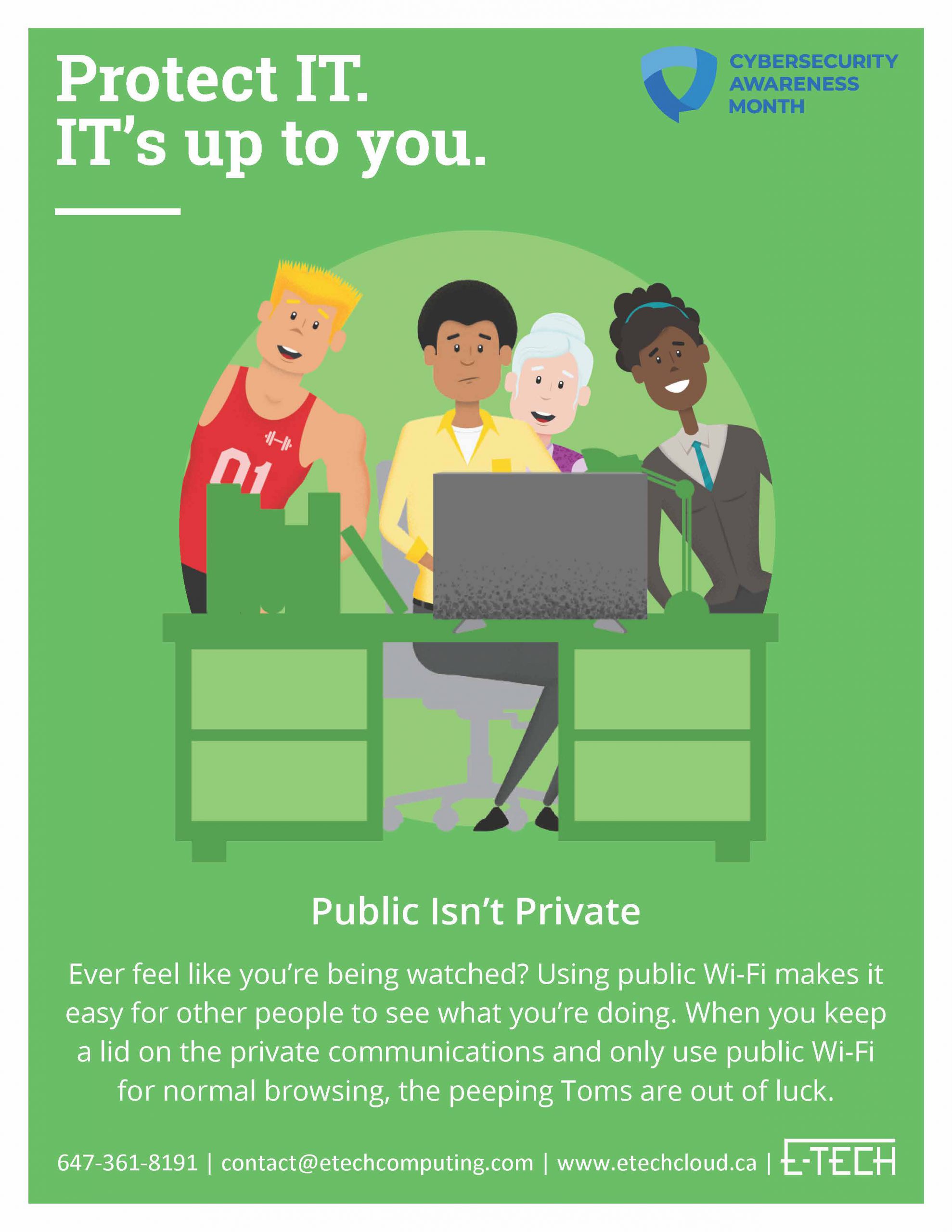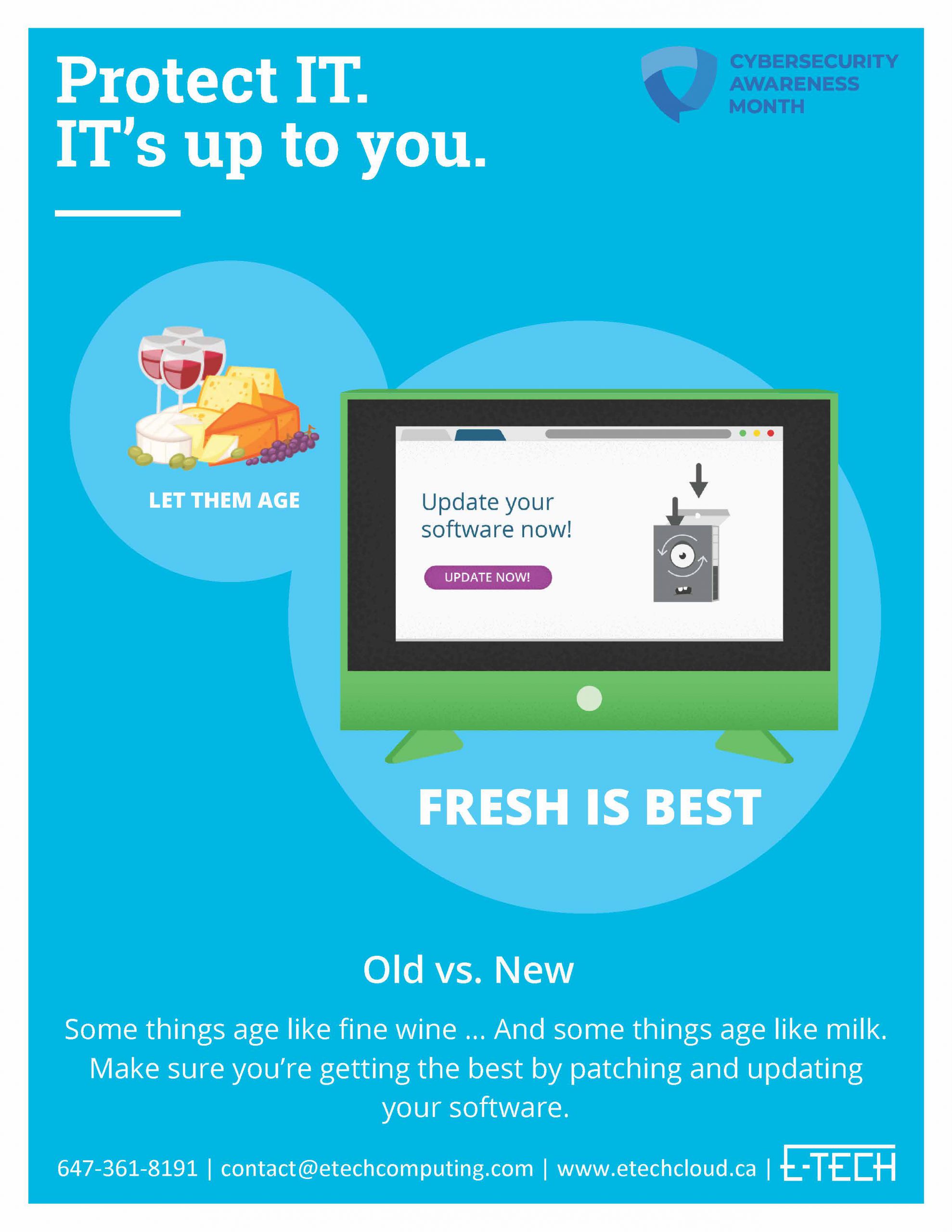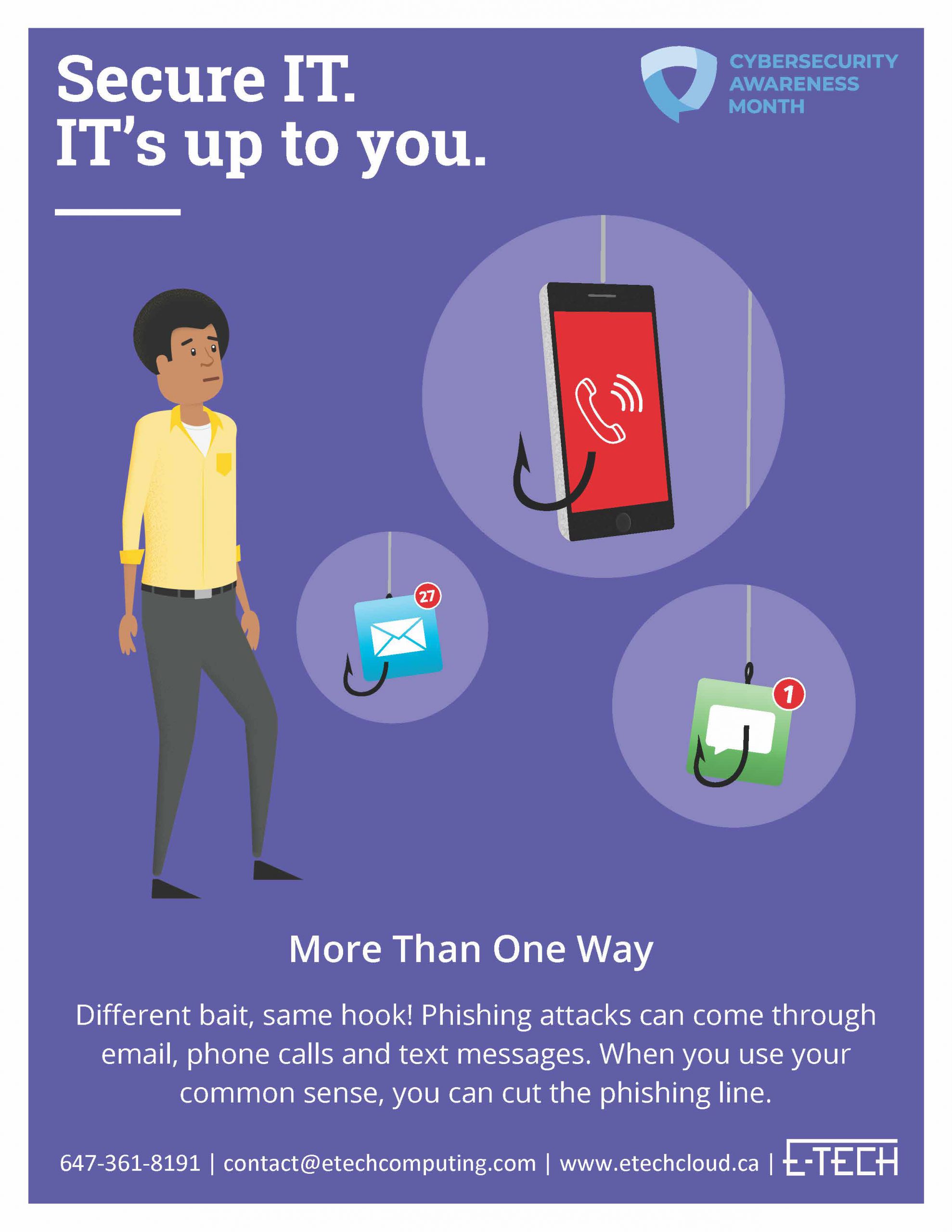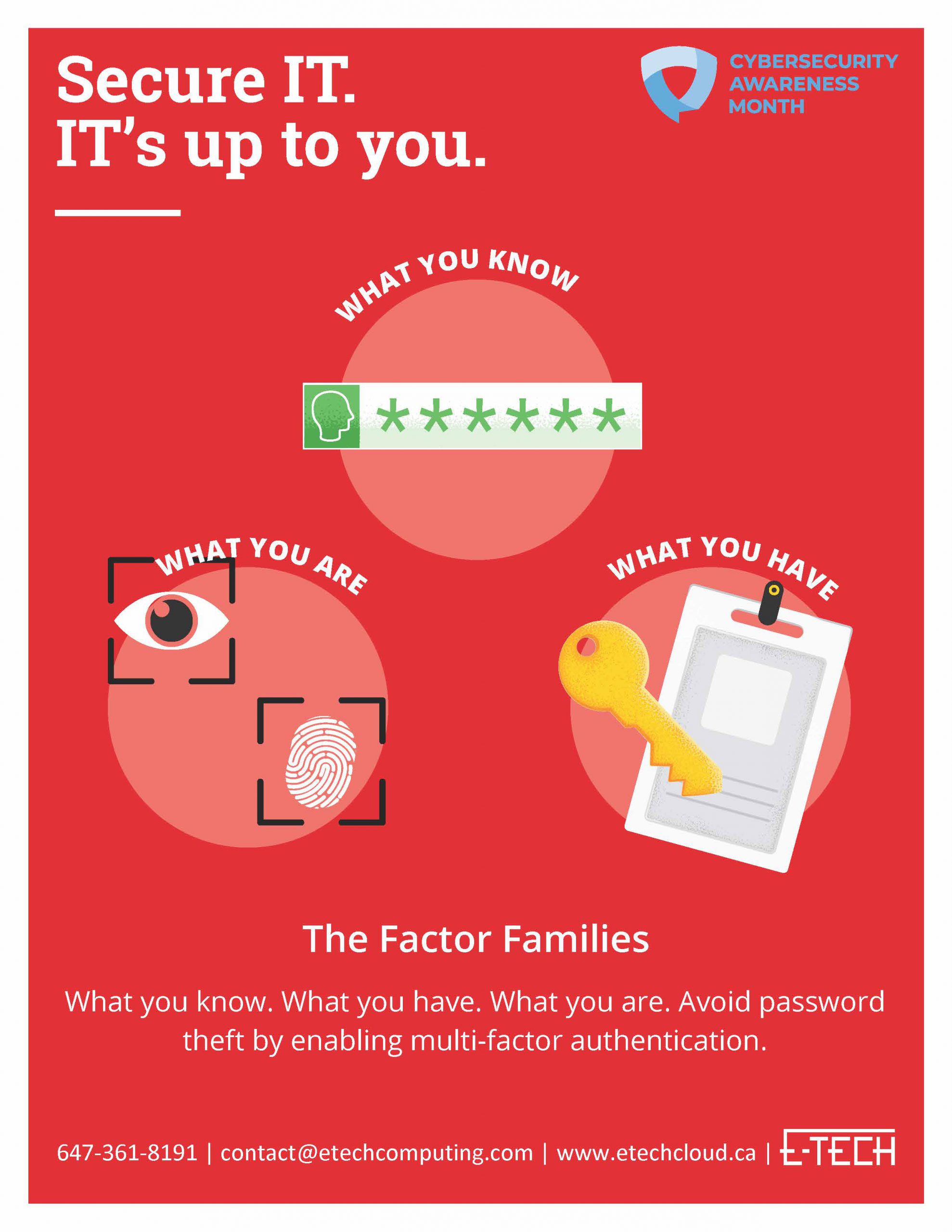No peeking! Staying safe and private on Wi-Fi
when you’re on public Wi-Fi, never access anything private. Accessing sports scores? Cool. Accessing your bank account? Not so much — not when the Wi-Fi’s owner could be looking over your cyber-shoulder. Second, if you’re using a business’s Wi-Fi, make sure to ask the owner for the exact name and password of the network. That way you can avoid mistakes and copycat networks. By playing it smart and being cautious, you can protect your information and make sure your private information stays private. For more tips and info about Wi-Fi safety, check out our infographic:Can’t view the pdf? Download it here. PROMO: We are also offering Working from Home Cyber Security Packages starting from $30.>








